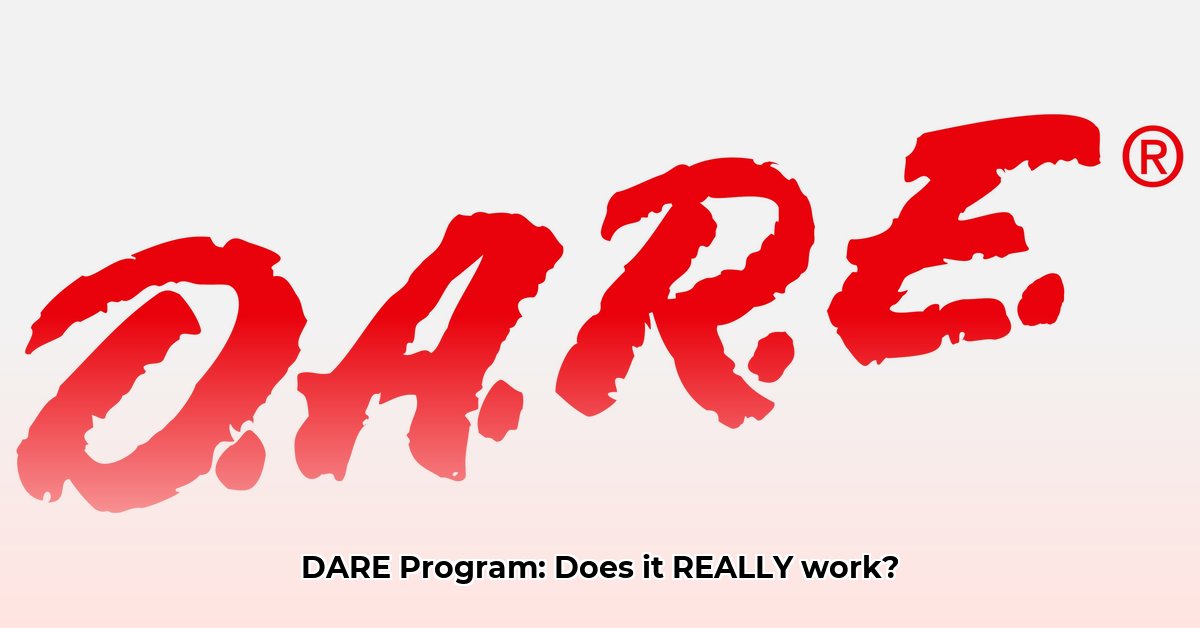For years, the D.A.R.E. program has been a familiar face in schools, teaching kids about drugs, gangs, and violence. But does it actually work? This review takes a close look at D.A.R.E. (Drug Abuse Resistance Education), comparing its methods to evidence-based prevention strategies. We’ll explore the program’s history, evaluate its past performance, and offer practical recommendations for updating it to stay relevant and effective. We’ll also share examples of successful implementations in various communities and highlight areas for improvement. Our goal is to provide a balanced assessment of D.A.R.E.’s strengths and weaknesses, offering actionable insights for anyone involved in the program to enhance its impact on drug abuse prevention.
Examining D.A.R.E.’s Legacy: A Critical Analysis
D.A.R.E. has been a fixture in schools for decades, demonstrating a widespread community interest in preventing drug abuse among youth. Founded in 1983, the program’s longevity suggests a perceived value. However, the crucial question remains: is it genuinely effective in reducing substance abuse and promoting healthy lifestyle choices? While its reach is undeniable, rigorous evidence is needed to validate its impact on drug use rates and to determine if there’s any long-term protective effect.
Evaluating Past Performance and Identifying Key Deficiencies
D.A.R.E.’s initial success was often judged by the number of students reached. However, program popularity doesn’t guarantee effectiveness in reducing substance abuse (the misuse of drugs, alcohol, or other substances). Despite its long history, numerous studies have questioned the program’s impact on actual drug use. Meta-analyses have shown little to no significant reduction in drug use among D.A.R.E. participants compared to non-participants. This lack of robust, scientific evidence presents a major challenge to assessing the program’s true value. Quantifiable data, not anecdotal evidence, is essential for accurate evaluation.
The program’s core principle – empowering children to make informed choices – is conceptually sound. However, skills-based teaching alone is insufficient. Consistent, high-quality implementation across all participating schools is paramount. Variability in program delivery, instructor training, and curriculum fidelity can lead to inconsistent results and undermine overall effectiveness.
Adapting for the Future: Addressing Evolving Drug Trends & Prevention
The most significant challenge facing D.A.R.E. is the dynamic nature of the drug landscape. The constant emergence of new substances, coupled with the vaping epidemic, the opioid crisis, and the increasing prevalence of synthetic drugs, demands continuous adaptation. If D.A.R.E. fails to evolve, it risks becoming irrelevant to the current challenges faced by youth. Can the program adapt to address evolving drug trends and remain a valuable resource for drug prevention education?
The use of law enforcement officers as instructors presents another complex issue. Their authority can be both beneficial and detrimental. While it may command attention and respect, it can also introduce bias, create a sense of distrust among some students, and limit the program’s reach. Some students may be hesitant to openly discuss sensitive issues with law enforcement. Further, police officers may lack formal training in pedagogy (the art and science of teaching), which could affect their ability to effectively convey the material. How can we ensure instructors possess both authority and pedagogical expertise, while also fostering trust and open communication with students?
Furthermore, the D.A.R.E. acronym itself, while widely recognized, has faced criticism due to its association with the original, less effective program model. This negative perception can hinder efforts to promote and implement updated, evidence-based versions of the program.
Roadmap for Improvement: Strategies for Enhancing D.A.R.E.’s Impact
To enhance D.A.R.E.’s effectiveness, concrete steps must be taken:
-
Rigorous Research is Paramount: Longitudinal studies comparing D.A.R.E. participants with non-participants are essential. This would furnish credible data necessary for an objective assessment of the program’s true effect on drug abuse rates (percentage of individuals engaging in substance abuse), as well as other important outcomes such as decision-making skills, resistance to peer pressure, and attitudes toward substance use.
-
Curriculum Modernization: Lessons must reflect contemporary drug trends, including vaping, opioid use, synthetic drugs, and the impact of social media on substance use. This will ensure students receive education relevant to the current challenges they face in their local communities and societal climates. The curriculum should also address the underlying factors that contribute to substance abuse, such as mental health issues, trauma, and poverty.
-
Enhanced Instructor Training: D.A.R.E. instructors require specialized training in effective teaching methodologies, adolescent development, and cultural sensitivity. This enables them to connect with students, communicate the program’s message effectively, and create a safe and supportive learning environment. Training should also emphasize evidence-based prevention strategies and the importance of curriculum fidelity.
-
Collaborative Partnerships: D.A.R.E. should forge collaborations with schools, healthcare professionals, community organizations, and families. Collaborative efforts are more likely to yield positive outcomes than isolated programs. Partnerships can help to ensure that students receive comprehensive support and resources.
-
Community Involvement: Students, parents, and community members should participate in program design and implementation. This increases program relevance and effectiveness by ensuring that the program addresses the specific needs and concerns of the community. Community advisory boards can provide valuable input and guidance.
Reinventing D.A.R.E.: A renewed dedication to evidence-based strategies
D.A.R.E.’s future hinges on its adaptability and evidence-based practices. By prioritizing rigorous research, updating the curriculum, enhancing instructor training, fostering collaboration, and engaging the community, D.A.R.E. can potentially become a more potent tool for drug prevention. Failing to adapt risks relegating it to a well-intentioned but ultimately ineffective effort. A thorough overhaul is crucial for the program to remain relevant in the ever-changing landscape of adolescent development and substance abuse prevention. Evidence-based approaches are essential to program effectiveness and meeting the needs of communities.
How to Improve D.A.R.E. Program Effectiveness Based on Current Research
Key Takeaways:
- The original D.A.R.E. program showed minimal impact on substance use.
- The updated “keepin’ it REAL” (kiR) program demonstrates improved outcomes, but results are mixed.
- Consistent, high-fidelity implementation of kiR is crucial for success.
- Longitudinal studies are needed to assess long-term effects.
- Further research is needed to fully understand kiR’s effectiveness and optimize its delivery.
Revisiting D.A.R.E.’s History: An Examination of Past Shortcomings
The Drug Abuse Resistance Education (D.A.R.E.) program, once a cornerstone of drug prevention education, has faced critical evaluation. Initial assessments revealed a concerning lack of efficacy in reducing drug use among participants. Meta-analyses consistently showed minimal impact on students’ substance use. This raises the question: what factors contributed to this lack of effectiveness? The original program’s didactic approach, relying on lectures, failed to actively engage students and promote lasting behavioral change. The program also lacked a strong theoretical foundation and often relied on scare tactics that were ineffective and sometimes counterproductive.
Keepin’ it REAL: An Enhanced Curriculum
The evolution of D.A.R.E. has led to a revised curriculum called “keepin’ it REAL” (kiR), designed around interactive learning, skill-building, and culturally relevant content. Studies suggest that kiR shows more promise than its predecessor. However, even with kiR, challenges remain. The effectiveness varies considerably across different implementations. This highlights a crucial point: how to improve dare program effectiveness based on current research hinges on consistent, high-quality delivery. Simply implementing the program isn’t enough; it needs to be implemented correctly, with fidelity to the curriculum and ongoing support for instructors.
Addressing The Gaps: Future Directions for D.A.R.E.
What steps can be taken to optimize D.A.R.E.’s effectiveness moving forward?
-
Rigorous Evaluation: Robust, longitudinal studies are crucial to assess the program’s long-term impact on substance use, decision-making skills, and other relevant outcomes. This requires carefully planned data collection methods, larger sample sizes, and the use of control groups.
-
Improved Implementation: kiR success depends on consistent fidelity in its implementation. This involves providing extensive training for instructors, ensuring they have the necessary skills and resources, and monitoring program delivery to ensure that it adheres to the curriculum. Program monitoring and quality control measures are essential to maintaining effectiveness.
-
Addressing Contextual Factors: The effectiveness of any prevention program is shaped by its context. Factors like school climate, community resources, and individual student characteristics all play a role. Future research needs to consider these complex interactions to develop tailored strategies. For example, programs may need to be adapted to address the specific needs of students from different cultural backgrounds or those who are at higher risk for substance abuse.
-
Enhanced Curriculum Design: Shortcomings of the original D.A.R.E. program highlight a need for continuous curriculum refinement. Further research should explore which types of interactive strategies are most effective in promoting long-term behavioral change. This could involve experimenting with different teaching methods, integrating technology, and tailoring the curriculum to resonate with students. The curriculum should also be regularly updated to reflect current drug trends and emerging challenges.
-
Collaboration and Dissemination: Successful program improvement
- Unforgettable: Talking Stick Golf Club Review – Desert Golfing Redefined - November 17, 2025
- Discover Talega Golf Club: Championship Golf & Spanish Hospitality Awaits! - November 15, 2025
- Is Strawberry Farms Golf Club Orange County’s Best Kept Secret? - November 13, 2025









